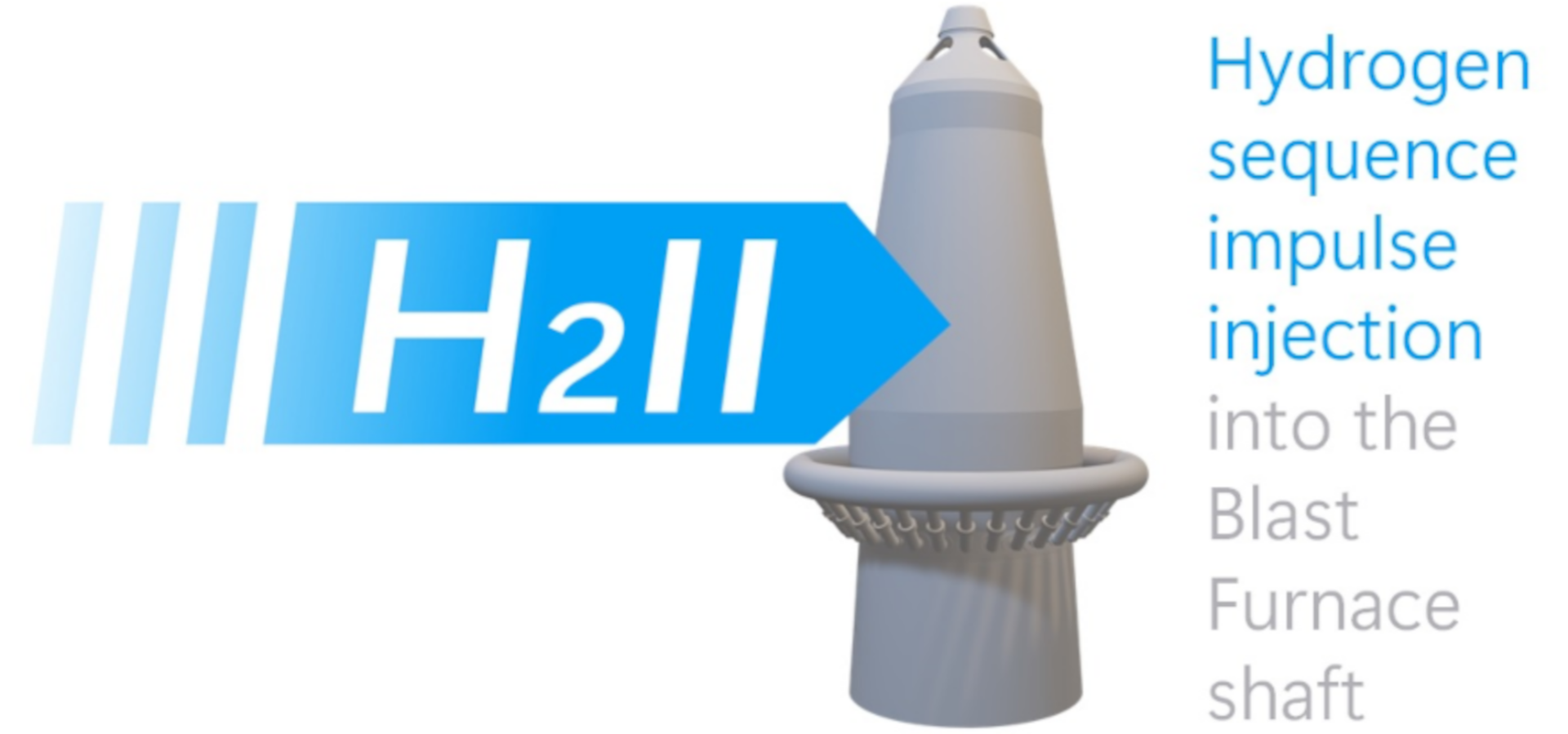
Project summary
CO2 mitigation at Blast furnaces (BF) is mandatory in the upcoming decade since, despite the starting of decarbonised process routes, the main share of EU ironmaking will remain via BFs. One main measure is to use Hydrogen as reductant instead of Carbon but injection at tuyere level has a low H2 utilisation degrees and a high bosh gas volume which might introduce permeability issues as major drawbacks.
Also possible shaft gas injection is strongly limited by low penetration depths. H2II aims at providing a flexible, economically viable solution for these issues on short-term. It will provide all basics needed to enable a demonstration on full industrial scale with up to 20% CO2 mitigation only 1-2 years after project end. This results in an outstanding wider impact of 275 Mt. CO2 mitigation as well as in significant support of the EU steel industry competitiveness. To achieve this breakthrough, H2II exploits impulse injection for H2 shaft gas injection. This technology, as Sequence impulse injection (SIP), has already proven its viability at an industrial BF injecting Oxygen on tuyere level. The straightforward H2II implementation combines a new lab test rig to extend existing sophisticated simulation models for the new application. This provides new physics and IT knowhow and enables as final result a technology validation by impulse injection trials at an industrial BF. The consortium synergises two large steel producers with two main steel research institutes, a specialised engineering company and a plant construction company to guarantee optimum H2II implementation and industrial roll-out as flexible and affordable CO2 mitigation solution already a few years after project end.